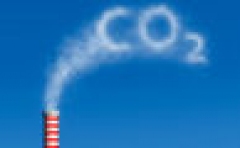And so I looked at that too, and so we're looking in a normal year coal being about $2 in every $100 in the Australian economy. So I thought, what about if we phased out coal, what about if we actually put pen to paper and had a plan to phase out of coal? What would it do to Australia if we did it, say, by 2020 such that we didn't export coal to a place where it wasn't going to be burnt cleanly and we didn't burn it at home unless emissions were going to be captured and stored. And I found that even in the most generous assumptions you could give the coal industry about their production, about their prices, that our GDP ended up doubling in 2031 instead of 2030. So it just simply wasn't the death knell that we're led to believe.
And then the other obvious question is what happens to all those workers? If we start doing that now, aren't you just going to be inflicting lots of misery on lots of these regional economies? Well, the simple question I ask in return is; if not now, when? We're currently doubling coal exports, so we're digging those communities deeper. How much deeper do you want them to be? And how much shorter, when we finally do have to phase out of coal, do you want that structural adjustment to be, because the shorter it is the harder it will be, and the sooner we start that phase-out the easier it will be on those communities.
Soil carbon is also discussed. An extract follows.
John White: It's been estimated by a number of soil scientists that across the whole 500 million hectares of Australia's agricultural lands, which is about two-thirds of the Australian continent, the average soil carbon content since European settlement has been reduced from around 3% or 4% down to probably around 1%. That is the equivalent of losing between 150 and 200 billion tonnes of CO2 equivalent from the soils as soil carbon. Not all of that has been oxidised into the atmosphere, much of it has simply been washed down the rivers and into the lakes and the oceans, but it has been lost to the soil. And so, for example, in Australia, if we rebuilt over the next 100 years soil carbon by catalysing grasses and the plants and the crops to suck the CO2 down and deposit it in the soil through the root structures, we could offset the entirety of Australia's current fossil fuel greenhouse gas emissions for the next 50 to 100 years.
Sarah Castor-Perry: That's equivalent to over a billion tonnes of CO2 being taken out of the atmosphere into the soil every year. But Dr Michael Crawford from the Department of Primary Industries in Victoria believes caution is needed with the use of brown coal in agriculture and that we need a better understanding of whether there is truly a net benefit. He makes the point that it does seem counterintuitive to dig up carbon as coal in one place, then spread it over fields in another and call it carbon sequestration. But John White argues that the main motivation for the farmers already involved in the project was to improve their soils and their yields whilst reducing their costs. Many had found the recent droughts combined with years of intensive farming has stripped their soils and made their businesses unviable. The brown coal mixtures, combined with a change in farming techniques, such as not burning crop stubble and not deep ploughing the soil, have improved water retention, decreased salinity and the need for fungicides and pesticides. He says the increase in soil carbon, and so the carbon sequestering benefits, was many welcome side effects.
You can join the discussion here .
Keep up to date with this discussion and others with RSS feeds at http://www.abc.net.au/rn/scienceshow/rss/ssw.xml
The second part of the program Catch up on Coal audio is available here.
Locally in the Scenic Rim Regional Council area we are concerned that a company called Lodestone is currently test drilling in the Veresdale Scrub area. The September 2009 activities report says that drilling began in October on EPC 1302, east of Beaudesert. This EPC contains the majority of the Veresdale Scrub Deposit from its northern boundary but drilling is constrained by the presence of small farms and by environmental restrictions.
 All too often we citizens and businesses continue to follow patterns of behaviour or ways of doing things as we have done in the past. Stopping to reflect is not a regular occurence for most of us - ie until something makes us sit up and look at what has happened because of what we have been doing.
All too often we citizens and businesses continue to follow patterns of behaviour or ways of doing things as we have done in the past. Stopping to reflect is not a regular occurence for most of us - ie until something makes us sit up and look at what has happened because of what we have been doing.